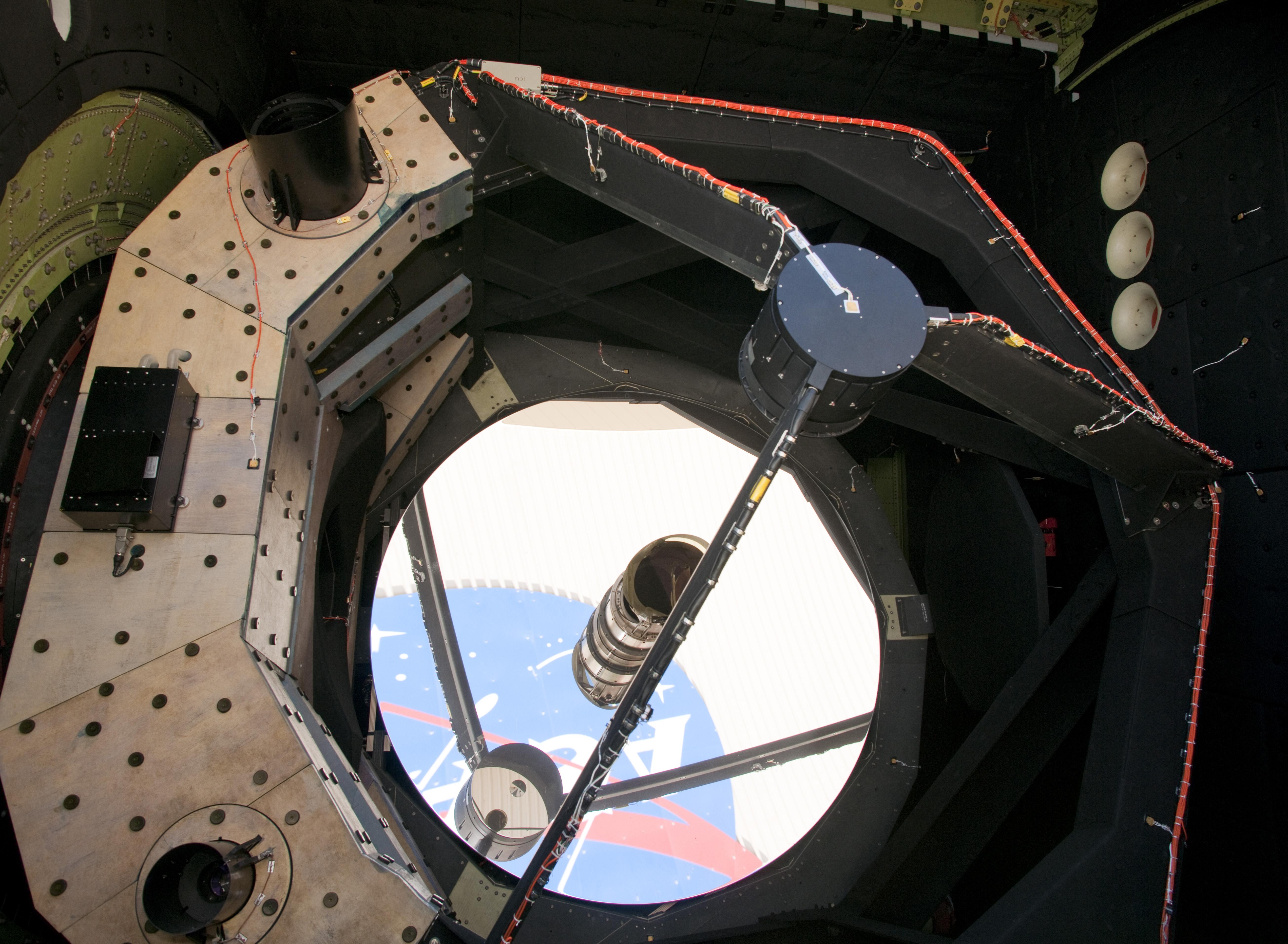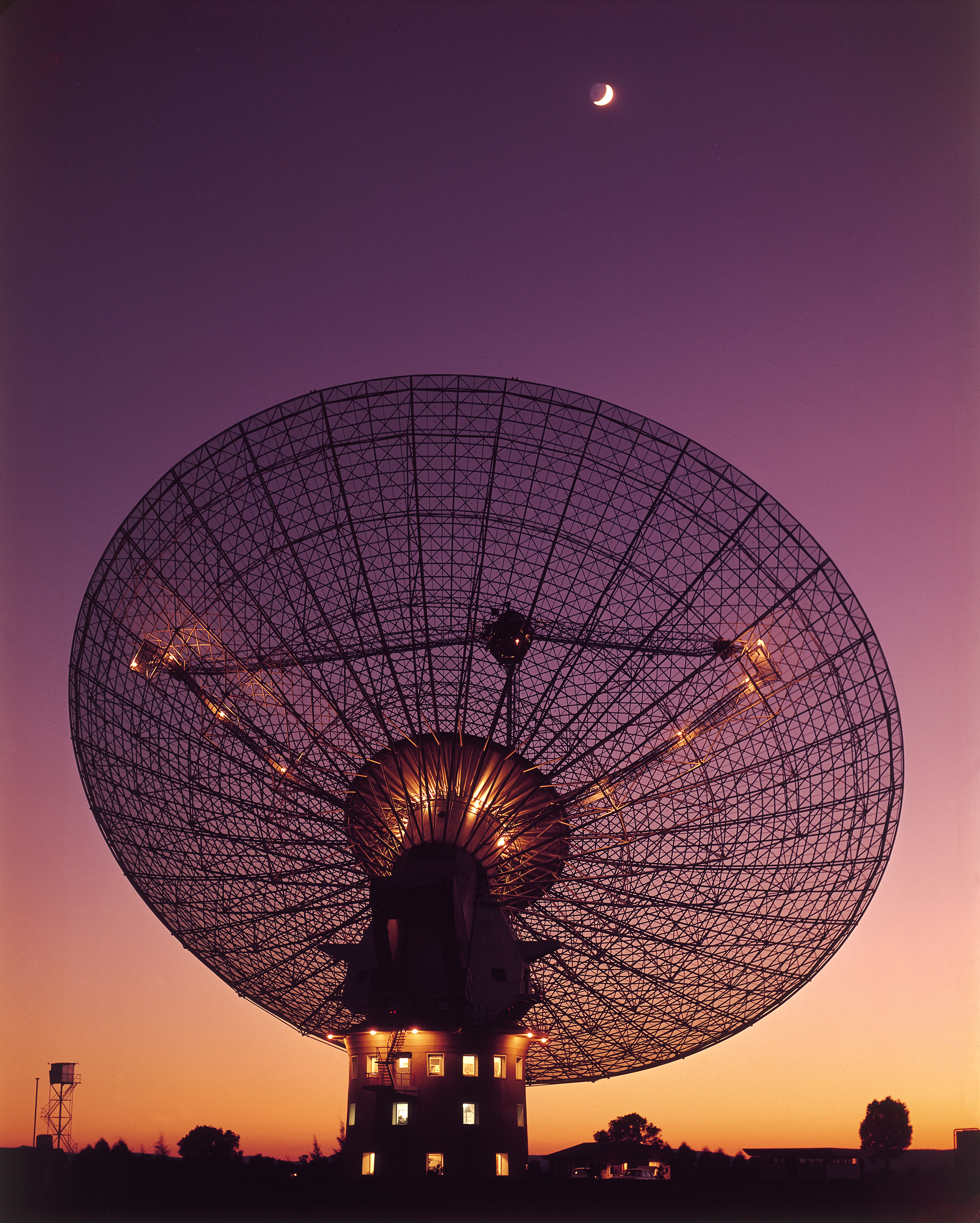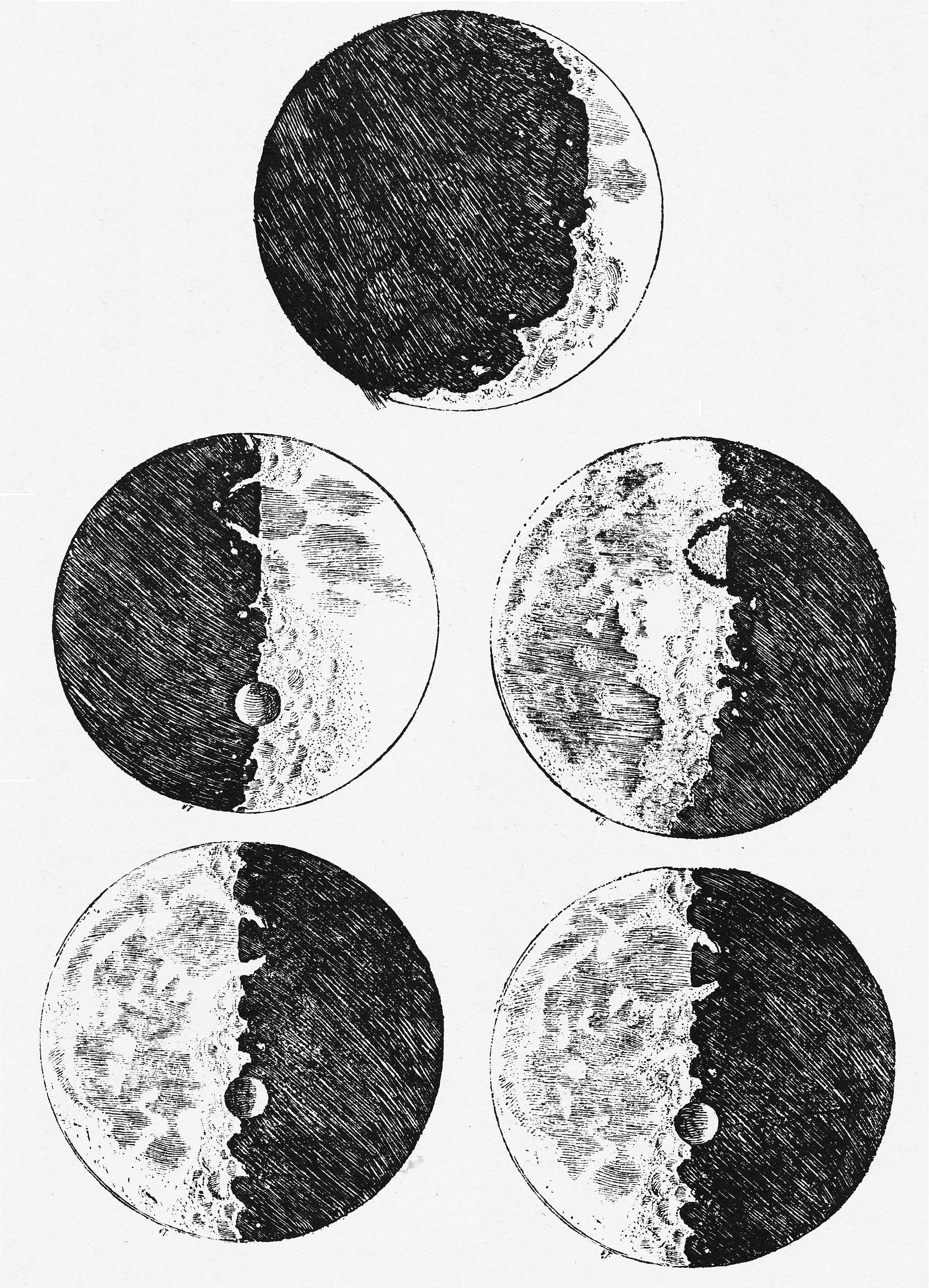|
Telescope
A telescope is a device used to observe distant objects by their emission, absorption, or reflection of electromagnetic radiation. Originally meaning only an optical instrument using lenses, curved mirrors, or a combination of both to observe distant objects, the word ''telescope'' now refers to a wide range of instruments capable of detecting different regions of the electromagnetic spectrum, and in some cases other types of detectors. The first known practical telescopes were refracting telescopes with glass lenses and were invented in the Netherlands at the beginning of the 17th century. They were used for both terrestrial applications and astronomy. The reflecting telescope, which uses mirrors to collect and focus light, was invented within a few decades of the first refracting telescope. In the 20th century, many new types of telescopes were invented, including radio telescopes in the 1930s and infrared telescopes in the 1960s. Etymology The word ''telescope'' was ... [...More Info...] [...Related Items...] OR: [Wikipedia] [Google] [Baidu] |
Reflecting Telescope
A reflecting telescope (also called a reflector) is a telescope that uses a single or a combination of curved mirrors that reflect light and form an image. The reflecting telescope was invented in the 17th century by Isaac Newton as an alternative to the refracting telescope which, at that time, was a design that suffered from severe chromatic aberration. Although reflecting telescopes produce other types of optical aberrations, it is a design that allows for very large diameter objectives. Almost all of the major telescopes used in astronomy research are reflectors. Many variant forms are in use and some employ extra optical elements to improve image quality or place the image in a mechanically advantageous position. Since reflecting telescopes use mirrors, the design is sometimes referred to as a catoptric telescope. From the time of Newton to the 1800s, the mirror itself was made of metal usually speculum metal. This type included Newton's first designs and even the larges ... [...More Info...] [...Related Items...] OR: [Wikipedia] [Google] [Baidu] |
Refracting Telescope
A refracting telescope (also called a refractor) is a type of optical telescope that uses a lens as its objective to form an image (also referred to a dioptric telescope). The refracting telescope design was originally used in spyglasses and astronomical telescopes but is also used for long-focus camera lenses. Although large refracting telescopes were very popular in the second half of the 19th century, for most research purposes, the refracting telescope has been superseded by the reflecting telescope, which allows larger apertures. A refractor's magnification is calculated by dividing the focal length of the objective lens by that of the eyepiece. Refracting telescopes typically have a lens at the front, then a long tube, then an eyepiece or instrumentation at the rear, where the telescope view comes to focus. Originally, telescopes had an objective of one element, but a century later, two and even three element lenses were made. Refracting telescope is a technology tha ... [...More Info...] [...Related Items...] OR: [Wikipedia] [Google] [Baidu] |
Radio Telescope
A radio telescope is a specialized antenna and radio receiver used to detect radio waves from astronomical radio sources in the sky. Radio telescopes are the main observing instrument used in radio astronomy, which studies the radio frequency portion of the electromagnetic spectrum emitted by astronomical objects, just as optical telescopes are the main observing instrument used in traditional optical astronomy which studies the light wave portion of the spectrum coming from astronomical objects. Unlike optical telescopes, radio telescopes can be used in the daytime as well as at night. Since astronomical radio sources such as planets, stars, nebulas and galaxies are very far away, the radio waves coming from them are extremely weak, so radio telescopes require very large antennas to collect enough radio energy to study them, and extremely sensitive receiving equipment. Radio telescopes are typically large parabolic ("dish") antennas similar to those employed in tracking an ... [...More Info...] [...Related Items...] OR: [Wikipedia] [Google] [Baidu] |
Galileo Galilei
Galileo di Vincenzo Bonaiuti de' Galilei (15 February 1564 – 8 January 1642) was an Italian astronomer, physicist and engineer, sometimes described as a polymath. Commonly referred to as Galileo, his name was pronounced (, ). He was born in the city of Pisa, then part of the Duchy of Florence. Galileo has been called the "father" of observational astronomy, modern physics, the scientific method, and modern science. Galileo studied speed and velocity, gravity and free fall, the principle of relativity, inertia, projectile motion and also worked in applied science and technology, describing the properties of pendulums and " hydrostatic balances". He invented the thermoscope and various military compasses, and used the telescope for scientific observations of celestial objects. His contributions to observational astronomy include telescopic confirmation of the phases of Venus, observation of the four largest satellites of Jupiter, observation of Saturn's rin ... [...More Info...] [...Related Items...] OR: [Wikipedia] [Google] [Baidu] |
Zacharias Janssen
Zacharias Janssen; also Zacharias Jansen or Sacharias Jansen; 1585 – pre-1632) was a Dutch spectacle-maker who lived most of his life in Middelburg. He is associated with the invention of the first optical telescope and/or the first truly compound microscope, but these claims (made 20 years after his death) may be fabrications put forward by his son. Biography Zacharias Janssen was born in The Hague. Local records seem to indicate he was born in 1585 although a date of birth as early as 1580 or as late as 1588 are also given. His parents were Hans MartensSource: a book by Huib J. Zuidervaart which is to be published in the spring of 2008. The in Middelburg has already been shown a first version of this book. (who may have had the occupation of a peddler) and Maeyken Meertens, both probably from Antwerp, Belgium. He grew up with his sister Sara in Middelburg, at the time the second most important city of the Netherlands. He was known as a "street seller" who was constantl ... [...More Info...] [...Related Items...] OR: [Wikipedia] [Google] [Baidu] |
Infrared Telescope
An infrared telescope is a telescope that uses infrared light to detect celestial bodies. Infrared light is one of several types of radiation present in the electromagnetic spectrum. All celestial objects with a temperature above absolute zero emit some form of electromagnetic radiation. In order to study the universe, scientists use several different types of telescopes to detect these different types of emitted radiation in the electromagnetic spectrum. Some of these are gamma ray, x-ray, ultra-violet, regular visible light (optical), as well as infrared telescopes. Leading discoveries There were several key developments that led to the invention of the infrared telescope: * In 1800, William Herschel discovered infrared radiation. * In 1878, Samuel Pierpoint Langley created the first bolometer. This was a very sensitive instrument that could electrically detect incredibly small changes in temperature in the infrared spectrum. * Thomas Edison used an alternative techno ... [...More Info...] [...Related Items...] OR: [Wikipedia] [Google] [Baidu] |
Hans Lipperhey
Hans Lipperhey (circa 1570 – buried 29 September 1619), also known as Johann Lippershey or Lippershey, was a German-Dutch spectacle-maker. He is commonly associated with the invention of the telescope, because he was the first one who tried to obtain a patent for it. It is, however, unclear if he was the first one to build a telescope. Biography Lipperhey was born in Wesel, now in western Germany, around 1570. He settled in Middelburg, the capital of the province of Zeeland, now in the Netherlands, in 1594, married the same year and became a citizen of Zeeland in 1602. During that time he became a master lens grinder and spectacle maker and established a shop. He remained in Middelburg until his death, in September 1619. Invention of the telescope Hans Lipperhey is known for the earliest written record of a refracting telescope, a patent he filed in 1608. His work with optical devices grew out of his work as a spectacle maker, an industry that had started in Venice and Floren ... [...More Info...] [...Related Items...] OR: [Wikipedia] [Google] [Baidu] |
Lens
A lens is a transmissive optical device which focuses or disperses a light beam by means of refraction. A simple lens consists of a single piece of transparent material, while a compound lens consists of several simple lenses (''elements''), usually arranged along a common axis. Lenses are made from materials such as glass or plastic, and are ground and polished or molded to a desired shape. A lens can focus light to form an image, unlike a prism, which refracts light without focusing. Devices that similarly focus or disperse waves and radiation other than visible light are also called lenses, such as microwave lenses, electron lenses, acoustic lenses, or explosive lenses. Lenses are used in various imaging devices like telescopes, binoculars and cameras. They are also used as visual aids in glasses to correct defects of vision such as myopia and hypermetropia. History The word '' lens'' comes from '' lēns'', the Latin name of the lentil (a seed of a lentil p ... [...More Info...] [...Related Items...] OR: [Wikipedia] [Google] [Baidu] |
Astronomy
Astronomy () is a natural science that studies celestial objects and phenomena. It uses mathematics, physics, and chemistry in order to explain their origin and evolution. Objects of interest include planets, moons, stars, nebulae, galaxies, and comets. Relevant phenomena include supernova explosions, gamma ray bursts, quasars, blazars, pulsars, and cosmic microwave background radiation. More generally, astronomy studies everything that originates beyond Earth's atmosphere. Cosmology is a branch of astronomy that studies the universe as a whole. Astronomy is one of the oldest natural sciences. The early civilizations in recorded history made methodical observations of the night sky. These include the Babylonians, Greeks, Indians, Egyptians, Chinese, Maya, and many ancient indigenous peoples of the Americas. In the past, astronomy included disciplines as diverse as astrometry, celestial navigation, observational astronomy, and the making of calendars. ... [...More Info...] [...Related Items...] OR: [Wikipedia] [Google] [Baidu] |
Jacob Metius
Jacob (Jacobus; sometimes James) Metius (after 1571–1628) was a Dutch instrument-maker and a specialist in grinding lenses. He is primarily known for the patent application he made for an optical telescope in October 1608, a few weeks after Hans Lippershey submitted a patent for the same device. He was the brother of the geometer and astronomer Adriaan Metius. Biography Little is known of Jacob Metius other than he lived his life in Alkmaar. His father was Adriaan Anthonisz, a mathematician/map-maker/military engineer and Alkmaar burgomaster, and his brother was Adriaan Metius. Jacob's date of birth was some time after his brother's (1571). He died in Alkmaar, his death date usually given in sources as 1628 although some put it between 1624 and 1631. Invention of the telescope In October 1608, the States General discussed Jacob Metius's patent application for a device for "seeing faraway things as though nearby", consisting of a convex and concave lens in a tube, and the ... [...More Info...] [...Related Items...] OR: [Wikipedia] [Google] [Baidu] |
Starry Messenger
''Sidereus Nuncius'' (usually ''Sidereal Messenger'', also ''Starry Messenger'' or ''Sidereal Message'') is a short astronomical treatise (or ''pamphlet'') published in New Latin by Galileo Galilei on March 13, 1610. It was the first published scientific work based on observations made through a telescope, and it contains the results of Galileo's early observations of the imperfect and mountainous Moon, the hundreds of stars that were unable to be seen in either the Milky Way or certain constellations with the naked eye, and the Medicean Stars (later Galilean moons) that appeared to be circling Jupiter.Raphael, Renée. ''Sidereus nuncius; or, A Sidereal Message, by Galileo Galilei''. Isis, Vol. 101, No. 3 (September 2010), pp. 644-645. Published by: The University of Chicago Press on behalf of The History of Science Society. The Latin word ''nuncius'' was typically used during this time period to denote ''messenger''; however, it was also (though less frequently) rendered as '' ... [...More Info...] [...Related Items...] OR: [Wikipedia] [Google] [Baidu] |
Parabolic Reflector
A parabolic (or paraboloid or paraboloidal) reflector (or dish or mirror) is a reflective surface used to collect or project energy such as light, sound, or radio waves. Its shape is part of a circular paraboloid, that is, the surface generated by a parabola revolving around its axis. The parabolic reflector transforms an incoming plane wave travelling along the axis into a spherical wave converging toward the focus. Conversely, a spherical wave generated by a point source placed in the focus is reflected into a plane wave propagating as a collimated beam along the axis. Parabolic reflectors are used to collect energy from a distant source (for example sound waves or incoming star light). Since the principles of reflection are reversible, parabolic reflectors can also be used to collimate radiation from an isotropic source into a parallel beam. In optics, parabolic mirrors are used to gather light in reflecting telescopes and solar furnaces, and project a beam of lig ... [...More Info...] [...Related Items...] OR: [Wikipedia] [Google] [Baidu] |








